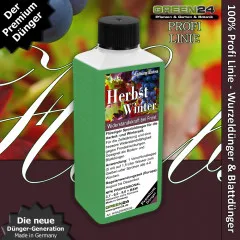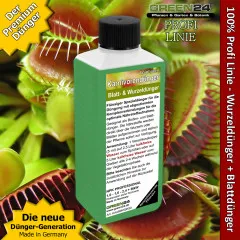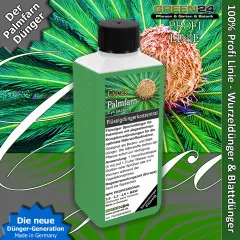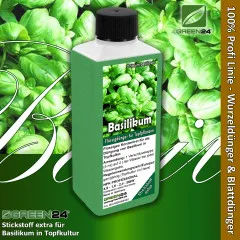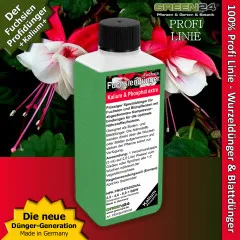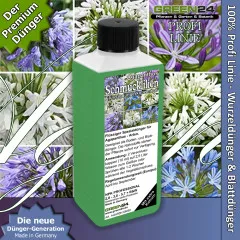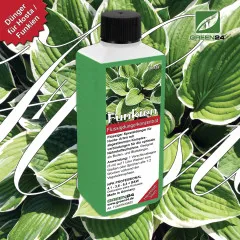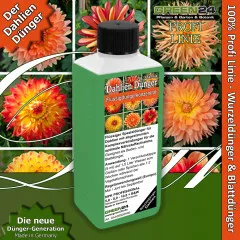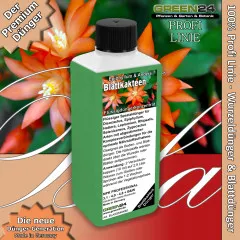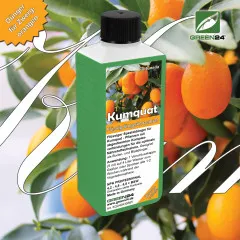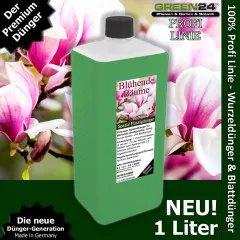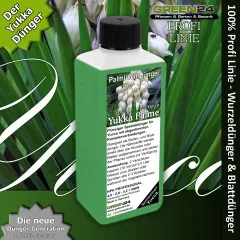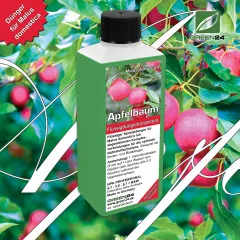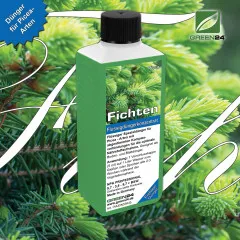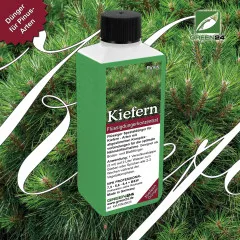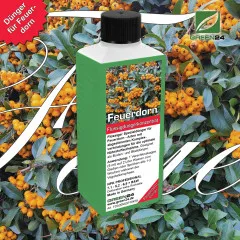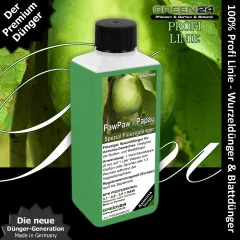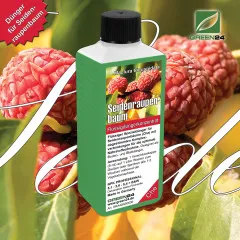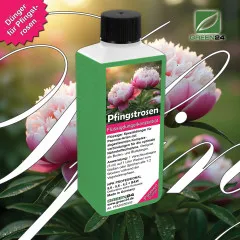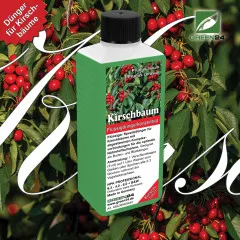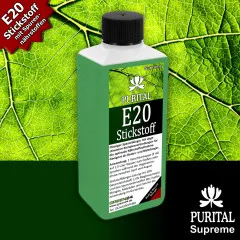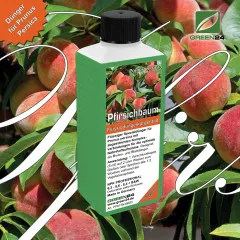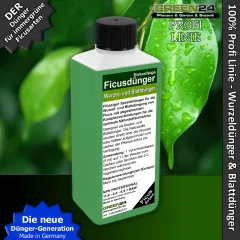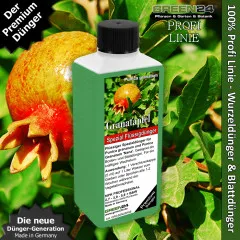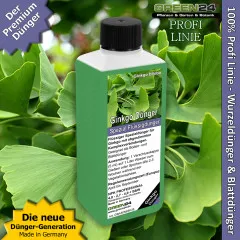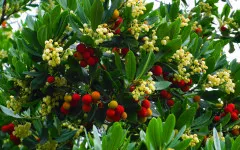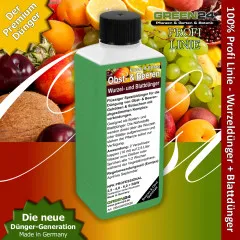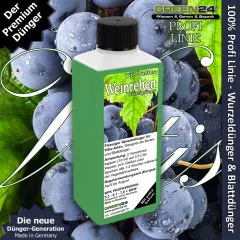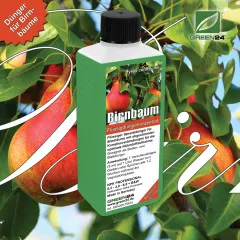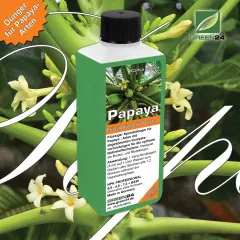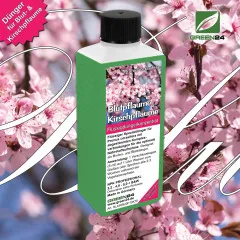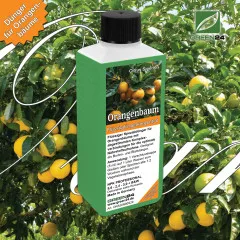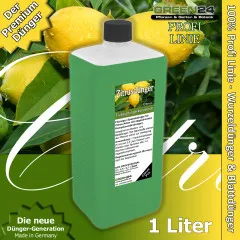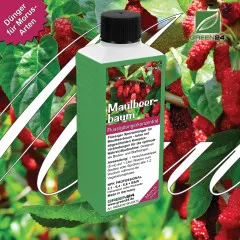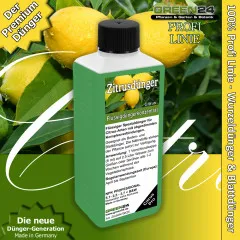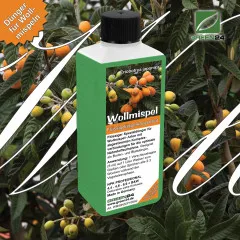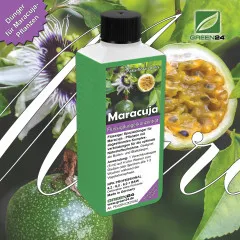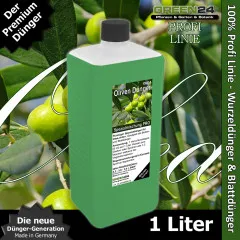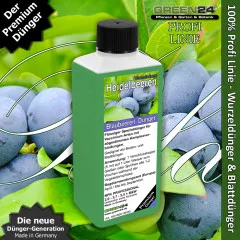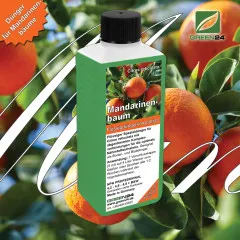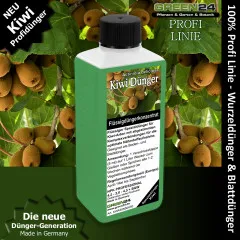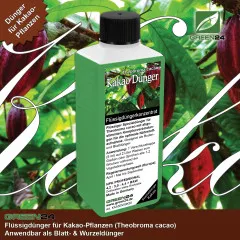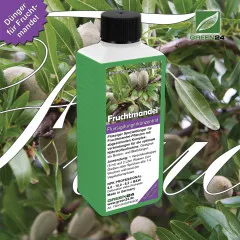Fig Dreams: GREEN24 Specialized Fertilizer for Fig Trees
Fig trees (Ficus carica) are the embodiment of Mediterranean lifestyle and delight with their millennia-old cultural history, characteristic lobed leaves, and delicious, sweet fruits. As symbols of fertility, prosperity, and life's pleasures, they bring authentic Mediterranean flair to every garden, patio, and conservatory. As demanding fruit trees, they require specially tailored nutrient supply to unfold their full splendor and deliver sweet, aromatic figs. Our Fig Specialized Fertilizer is precisely tailored to these special needs.
Plant Profile: Fig Tree (Ficus carica)
- Family: Moraceae (Mulberry family)
- Genus: Ficus (Fig)
- Species: Ficus carica (Common Fig, Fig Tree)
- Origin: Asia Minor, Mediterranean region, now cultivated worldwide
- Description: Deciduous tree or shrub with characteristic lobed leaves
- Special Feature: One of humanity's oldest cultivated plants (over 11,000 years)
- Important Varieties:
- Self-Fertile Varieties:
- 'Brown Turkey' - Robust brown figs, winter hardy
- 'Violette de Bordeaux' - Small violet figs, very sweet
- 'Brunswick' - Large green figs with red flesh
- 'Chicago Hardy' - Extremely winter hardy variety
- Mediterranean Classics:
- 'Sultane' - Large yellow figs, very aromatic
- 'Ronde de Bordeaux' - Round violet figs
- 'Grise de la Saint-Jean' - Gray figs, early ripening
- 'Longue d'Août' - Elongated figs, August harvest
- Container-Suitable Varieties:
- 'Petite Negra' - Compact growth, small dark figs
- 'Little Miss Figgy' - Dwarf variety for pots
- 'Celeste' - Compact, very sweet figs
- 'Desert King' - Large figs, container suitable
- Self-Fertile Varieties:
- Growth form: Tree or multi-stemmed shrub, 3-10m high
- Leaves: Large, palmately lobed, rough, deciduous
- Flowers: Inconspicuous, hidden inside the fig
- Fruits: Figs (botanically false fruits), green, yellow, brown or violet
- Lifespan: Very long-lived, 50-200+ years
- Winter hardiness: Depending on variety -10°C to -20°C
- Uses: Fruit tree, container plant, espalier, conservatory
The Science of Fig Tree Nutrition
The Mediterranean Formula for Authentic Fig Culture
Fig trees have special nutrient requirements as Mediterranean fruit trees with intensive fruit formation for optimal development:
- Nitrogen (N) for Leaf and Shoot Growth: Essential for characteristic large fig leaves and strong shoots. Nitrogen promotes photosynthesis and growth.
- Phosphorus (P) for Flowers and Fruits: Central for fruit formation and fig development. Phosphorus supports energy metabolism and fruit production.
- Potassium (K) for Sugar Formation: Critical for sugar transport, flavor, and winter hardiness. Potassium regulates water balance and strengthens frost resistance.
- Calcium (Ca) for Cell Stability: Essential for firm cell walls and disease resistance. Calcium improves fig quality and storability.
- Magnesium (Mg) for Chlorophyll: Central atom of chlorophyll, important for photosynthesis and healthy leaf coloration.
- Iron (Fe) for Leaf Health: Prevents chlorosis and ensures rich green leaves. Iron deficiency is common in fig trees.
- Boron (B) for Fruit Set: Critical for fruit formation and fig set. Boron deficiency leads to poor fruit development.
- Trace Elements: Zinc for growth hormones, manganese for enzyme activity, molybdenum for nitrogen utilization.
- Complex Compounds: Chelated nutrients remain plant-available even in calcareous soil.
- Protein Metabolism Booster: Special compounds for optimal protein synthesis.
- Carbohydrate Metabolism Optimizer: Promote sugar formation and storage in figs.
Application: Professional Care for Your Fig Trees
Root Feeding (Main Method)
- Dosage by Tree Size:
- Young fig trees (1-2 years): 3-4ml concentrate per 1L water
- Medium trees (3-5 years): 5-6ml concentrate per 1.5L water
- Large trees (6+ years): 7-8ml concentrate per 2L water
- Container fig trees: 4-5ml concentrate per 1L water
- Frequency by Season:
- Bud break (March-April): Every 5-10 days
- Main growth (May-July): Every 1-2 weeks
- Fruit ripening (August-September): Every 2 weeks
- Autumn (October): Last fertilization before winter rest
- Winter rest (November-February): No fertilization
- Application: Water soil well before fertilizing, then distribute fertilizer solution evenly in root area
- Special note: Fig trees are heavy feeders and require regular nutrient supply
Foliar Spraying (Quick Help)
The characteristic large, lobed fig leaves are excellent for spray feeding and enable rapid nutrient uptake.
- Dosage: 2-5ml per 1 liter of water
- Application: Spray leaves from both sides, especially with deficiency symptoms
- Frequency: Every 1-3 weeks in addition to root feeding
- Optimal times: Early morning hours or late evening hours
- Tip: Use lime-free water (rainwater) for optimal uptake
- Particularly effective: With leaf loss or weak growth
Care Guide for Fig Trees
Location and Substrate
- Light: Full sun, at least 6-8 hours direct sun
- Substrate: Well-draining, humus-rich, slightly alkaline (pH 6.5-7.5)
- Drainage: Important, no waterlogging
- Wind protection: Sheltered location, especially in winter
- Warmth: Warm, sunny locations preferred
Pruning and Training
- Winter pruning: February/March, before bud break
- Summer pruning: June/July, shorten shoots
- Training forms: Bush, espalier, standard
- Fruit wood: Figs form on one-year-old shoots
Special Features of Fig Trees and Their Uses
Cultural History and Symbolism
- Ancient tradition: Over 11,000 years of cultural history
- Biblical significance: Tree of knowledge, fig leaf
- Mythology: Tree of life, fertility symbol
- Prosperity: Symbol of wealth and abundance
Garden Design with Fig Trees
- Specimen tree: Impressive focal point in the garden
- Espalier culture: Space-saving wall greening
- Container culture: Mobile fig trees for patios
- Conservatory: Year-round Mediterranean atmosphere
Culinary Use
- Fresh figs: Sweet enjoyment directly from the tree
- Dried figs: Durable delicacy
- Fig jam: Homemade preserve
- Fig leaves: Culinary use as flavor enhancer
Seasonal Development
- Spring: Bud break, leaf development, first fig sets
- Summer: Main growth, fruit development, first harvest
- Autumn: Second harvest, autumn leaf coloration
- Winter: Leaf drop, rest period, frost protection
Problem Solving Through Targeted Nutrient Supply
Common Problems and Solutions
- Leaf loss: Nutrient deficiency or stress → Intensive fertilizing, check location
- Poor fruit set: Boron deficiency or unfavorable weather → Boron fertilizing, foliar spraying
- Small, tasteless figs: Potassium deficiency or too little sun → Potassium-emphasized fertilizer, choose sunnier location
- Weak growth: Nutrient deficiency or too cool location → Intensify fertilizing, find warmer place
- Yellow leaves: Iron deficiency or waterlogging → Improve drainage, give chelated iron
- Frost damage: Insufficient winter hardiness → Frost protection, choose winter hardy varieties
Effects of Optimal Fertilizing
- Leaves: Become large, rich green and characteristically lobed
- Growth: Strong, healthy shoots with typical fig tree structure
- Fruits: Sweet, aromatic figs with high sugar content
- Resistance: Better resistance to diseases and stress
- Winter hardiness: Improved frost resistance through ripened shoots
- Regeneration: Quick recovery after leaf loss or stress
- Fruit quality: Larger, sweeter figs with more intense aroma
Modern Fig Tree Culture
Garden Culture (Main Application)
- Site selection: Sunny, sheltered south-facing location
- Soil preparation: Well-draining, humus-rich, calcareous
- Planting: Spring after last frosts
- Winter protection: Required depending on variety and region
Espalier Culture
- Wall espalier: On southern house walls
- Free espalier: Free-standing construction
- Training: Horizontal main branches, vertical fruit shoots
- Advantages: Space-saving, good sun exposure, frost protection
Container Culture
- Pot size: At least 50-70cm diameter
- Substrate: Well-draining, nutrient-rich soil
- Overwintering: Frost-free, bright location
- Varieties: Prefer compact varieties
Conservatory Culture
- Temperature: 5-15°C in winter optimal
- Light: Bright location, possibly additional lighting
- Humidity: Spray regularly
- Advantages: Year-round culture, earlier harvest
Metabolism Optimization for Fig Trees
Protein Metabolism Support
- Amino acid synthesis: For vigorous growth and resistance
- Enzyme activation: Optimized metabolic processes
- Stress resistance: Better adaptation to environmental conditions
Carbohydrate Metabolism Promotion
- Sugar formation: Sweet, aromatic figs
- Starch storage: Energy reserves for winter
- Fruit quality: Optimal flavor development
Water Balance Regulation
- Osmotic regulation: Efficient water use
- Drought resistance: Better adaptation to water shortage
- Cell turgor: Plump, juicy figs
Mandatory Application Instructions
- Mandatory observance of information sheet 130405! This can be found at URL https://www.green24.de/NPK.pdf
- Always observe the label!
- Do not apply undiluted.
- Shake well before use.
- Only apply during the growing season.
Safety Instructions
- Avoid contact with eyes, skin, and clothing.
- Do not inhale spray or spray mist.
- Keep away from food and beverages.
- Wash face and hands thoroughly after use.
- Official advisory recommendations take precedence.
- Fertilizers may leave stains on surfaces that may not be removable.
Storage
- Store dry, dark at +8°C to +40°C.
- Keep out of reach of children and animals.
- Fertilizer must not be introduced into water bodies or reach wastewater.
- With proper storage, stable for several years without quality loss.
- Use diluted fertilizer promptly.

